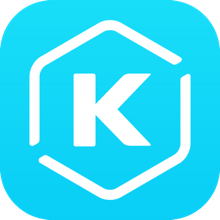Available Platforms
Description
牛俊強
牛俊強長期從事錄像和平面複合媒材創作,作品以「視覺作為一種存在的形式」出發,延伸至時空向度中,讓不可見的關係連結、個人至群體的生命意識得以浮現,擅長闡述「存在的本質」。
Self Portrait
2020|互動響應式網頁
藝術家在臺灣盲人重建院擔任了一年多的志工,期間接觸了十二位全盲的視障者。經過一段時間的相處後,藝術家問他們:「你覺得我的外表是什麼樣子?」他們以聲音、氣味、移動的感覺等「非視覺」的經驗描述藝術家的長相,他再將這些描述外表的文字,以布萊爾點字(盲文)的方式打在與身等高的牛皮上。這些點字如同從皮膚裡長出的疹子,也像年代不詳的古卷地圖。這件作品是可見與不可見的辯證,也是對視覺藝術外在形態追求的省思。明眼者無法從點字內容得知藝術家的外表,而學過盲文的視障者則能從這些點字,「看見」事物形貌下更深刻的本質。
https://martian.beauxarts.tw/artwork/niu_junqiang_self_portrait
Jun-Qiang NIU
The artist focuses on video, film and mixed media installations which departs from the idea of “seeing as a form of existence” to elaborate the nature of objects.
During the creative conception, the artist endeavors to investigate the invisible relations between materiality and spirituality to foreground the individual, even collective life consciousness. He has worked with different sorts of participants to narrate their pasts to create a more united experience.
Self Portrait
2020|Interactive and responsive web page
The artist has worked as a volunteer at the Institute for the Blind of Taiwan for more than a year, during which he contacted 12 persons of complete visual loss. After getting along with them for a while, the artist asked them, “What do you think of my appearance?” They described the artist's appearance with “non-visual” experiences such as sound, smell, and movement. Then, he translated into the tactile writing system (Braille) the description, typed on a piece of cowhide equal to a person's height. The embossed transcription is similar to rashes growing out of skin as well as to dateless ancient scroll maps. The artwork serves as a dialectics of visible and invisible, and as a reflection in pursuit of the external form of visual art. The visually abled have no access to the artist's appearance by Braille, but the visually disabled who have learned Braille can “see” by the embossed code a more profound essence from the appearance.
https://martian.beauxarts.tw/artwork/niu_junqiang_self_portrait

